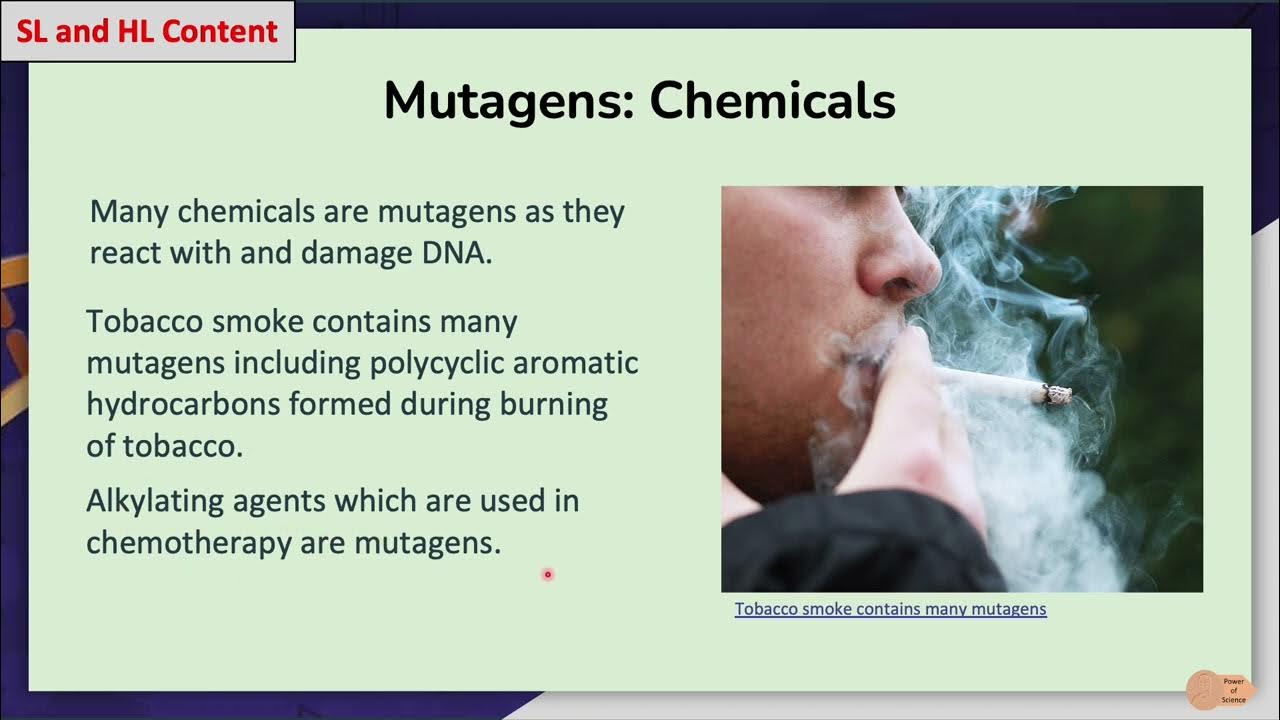Grade 10 SCIENCE | Quarter 3 Module 4C | Mutations
Summary
TLDRThis video lesson explains the concept of mutations, focusing on how they can alter protein structure and function. It covers different types of mutations, including point mutations (insertion, deletion, and substitution) and chromosomal mutations, which can lead to genetic disorders like Down syndrome, cystic fibrosis, and sickle cell anemia. The video also explores the role of mutations in the COVID-19 pandemic and highlights beneficial mutations, such as lactose tolerance and drug resistance. The lesson emphasizes the impact of mutations on both health and survival, offering insights into how these genetic changes shape both individuals and populations.
Takeaways
- 😀 Mutations are changes in an organism's genetic material that can affect the structure and function of proteins.
- 😀 Point mutations include insertion, deletion, and substitution, each altering the DNA sequence in different ways.
- 😀 Insertion mutations add an extra base pair to the DNA sequence and can lead to disorders like beta thalassemia.
- 😀 Deletion mutations remove a base pair from the DNA sequence and are linked to diseases such as cystic fibrosis.
- 😀 Substitution mutations involve swapping bases and can cause conditions like sickle cell anemia.
- 😀 Chromosomal mutations can lead to genetic disorders such as Cri-du-Chat syndrome, Down syndrome, and Edward syndrome.
- 😀 A karyotype is a visual representation of an individual's chromosomes, used to diagnose genetic disorders.
- 😀 Down syndrome is a result of trisomy 21, where there are three copies of chromosome 21.
- 😀 Genetic disorders like Klinefelter syndrome occur when there is an extra chromosome, affecting sexual development.
- 😀 Some mutations can be beneficial, such as drug resistance in bacteria or genetic protection against malaria in sickle cell carriers.
Q & A
What are mutations in the context of genetics?
-Mutations are changes made to an organism's genetic material, which can alter the structure and function of proteins. These changes can result from errors in DNA replication or transcription.
What is a point mutation?
-A point mutation is a category of mutations that involves a change in a single nucleotide in the DNA sequence. This can include insertion, deletion, or substitution of nucleotides.
How does an insertion mutation affect DNA?
-An insertion mutation involves adding an extra base pair to the DNA sequence. This change can lead to diseases such as beta-thalassemia, which affects hemoglobin production.
What is the effect of a deletion mutation?
-In a deletion mutation, one or more base pairs are removed from the DNA sequence. This can lead to disorders like cystic fibrosis, which affects the lungs and digestive system.
What happens in a substitution mutation?
-A substitution mutation occurs when one base pair is swapped for another. An example is sickle cell anemia, where adenine is replaced with thymine, leading to a change in the hemoglobin structure.
What is a karyotype, and how does it relate to genetic disorders?
-A karyotype is an individual's collection of chromosomes. It helps in identifying genetic disorders caused by chromosomal abnormalities, such as trisomy or monosomy, where there are extra or missing chromosomes.
What is Down syndrome, and how is it caused?
-Down syndrome, also known as trisomy 21, is caused by the presence of an extra chromosome 21. It leads to intellectual disability, characteristic facial features, and other health issues.
How do mutations in the COVID-19 virus affect its transmission?
-Mutations in the COVID-19 virus can result in new variants that may affect the virus's transmission rate, vaccine effectiveness, and severity of the disease. These mutations often arise during replication errors in the viral RNA.
Can mutations have beneficial effects?
-Yes, some mutations can be beneficial and provide organisms with advantages that help them survive. For example, sickle cell anemia provides protection against malaria in carriers, and lactose tolerance allows some humans to digest milk.
What is the role of favorable mutations in evolution?
-Favorable mutations provide organisms with traits that give them a survival advantage, allowing them to thrive in their environments. Over time, these mutations can contribute to the evolution of species.
Outlines

Этот раздел доступен только подписчикам платных тарифов. Пожалуйста, перейдите на платный тариф для доступа.
Перейти на платный тарифMindmap

Этот раздел доступен только подписчикам платных тарифов. Пожалуйста, перейдите на платный тариф для доступа.
Перейти на платный тарифKeywords

Этот раздел доступен только подписчикам платных тарифов. Пожалуйста, перейдите на платный тариф для доступа.
Перейти на платный тарифHighlights

Этот раздел доступен только подписчикам платных тарифов. Пожалуйста, перейдите на платный тариф для доступа.
Перейти на платный тарифTranscripts

Этот раздел доступен только подписчикам платных тарифов. Пожалуйста, перейдите на платный тариф для доступа.
Перейти на платный тариф5.0 / 5 (0 votes)






